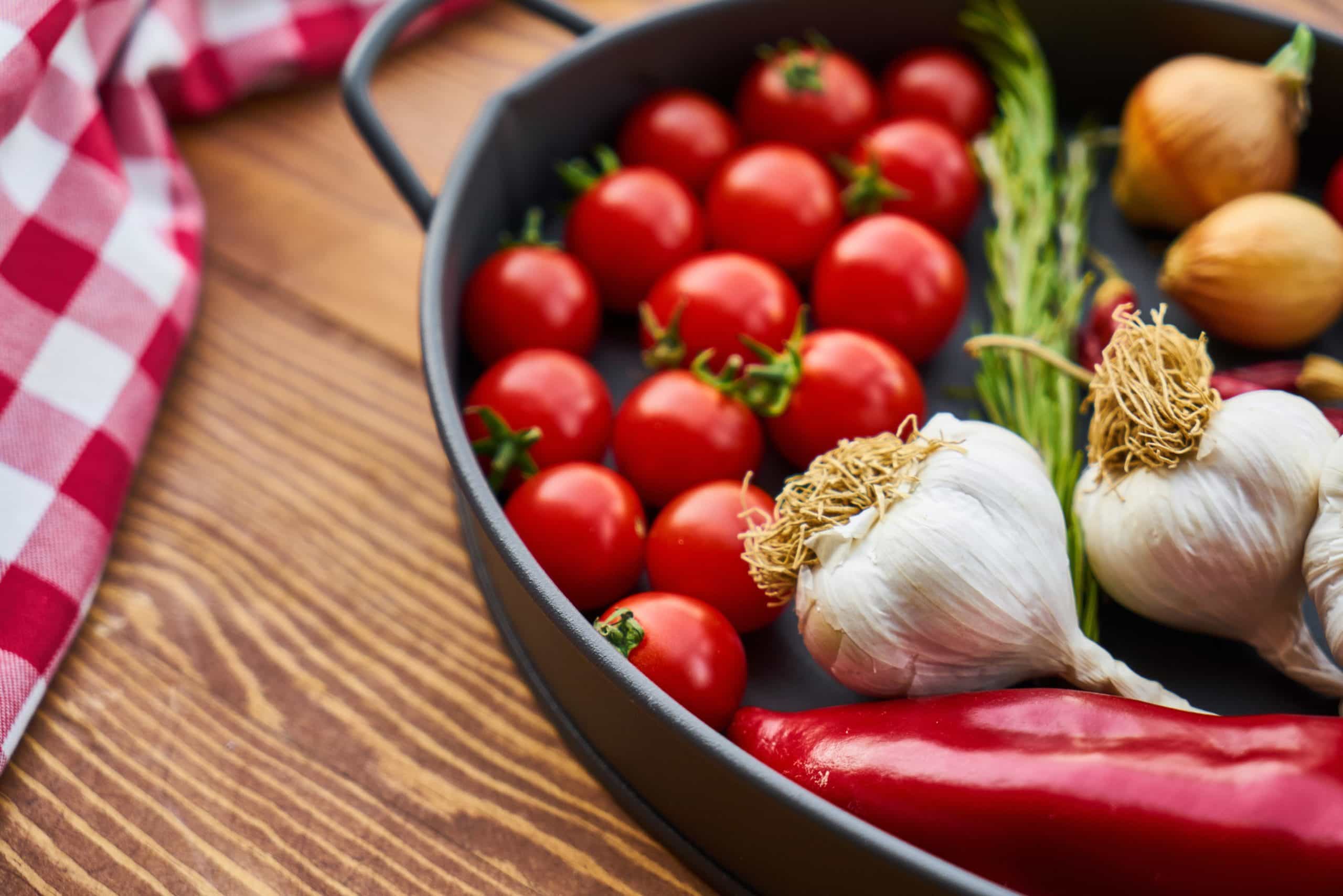It is that time of the year again when we vow to start eating healthier. Developing healthier eating habits isn’t as confusing or restrictive as many people imagine. Eating healthier means eating a variety and balance of foods made up of mainly whole, unprocessed foods. There are many dietary patterns to achieve this goal, but one of the most researched is the Mediterranean Diet.
The Mediterranean Diet refers to traditional dietary patterns found in olive-growing areas of the Mediterranean region such as southern Italy, Greece, and Spain. The Mediterranean diet is a lifestyle rather than a formal diet plan. This style of eating focuses on positives (like eating more fresh vegetables) rather than negatives (like cutting out pasta). The foundation of the Mediterranean diet is vegetables, fruits, herbs, nuts, beans, whole grains and olive oil. Meals are built around these plant-based foods. Moderate amounts of dairy, poultry and eggs are also central to the Mediterranean Diet, as is seafood. In contrast, red meat is eaten only occasionally. Eating this way comprises a diet rich in fiber, monounsaturated fat, omega-3 fatty acids, antioxidants and phytochemicals which numerous clinical studies have proven can protect against the development of heart disease, cancer, dementia, and depression.
So how do you incorporate the Mediterranean way of eating?
- Increase your vegetable consumption. Try to make half of your plate vegetables for lunch and dinner. Eat a rainbow of colors to get the maximum nutrients and eat what’s in season. For example, asparagus is in season in the spring, tomatoes in the summer, and kale in the winter. Try steaming, roasting, sautéing or stir-frying. Sauté spinach and peppers, stir-fry broccoli, and roast butternut squash. Make a vegetable soup.
- Eat 3-4 servings of fruits per day. As with the vegetables, eat a variety and try to eat seasonally. Start your day with blueberries on your oatmeal. If fresh blueberries are not in season, use frozen. Try a few dates or a baked cinnamon apple for dessert.
- Use whole grains instead of refined grains. Use brown or black rice instead of white. Try traditional Mediterranean grains like bulgur, farro, and barley.
- Include one or two vegetarian meals per week. Use beans, lentils, or tofu as your protein source instead of meat. Make a lentil soup with a slice of whole grain bread or quinoa mixed with vegetables and black beans.
- Eat seafood twice a week. Choose omega-3 rich fish such as wild salmon, herring, trout, and sardines.
- Consume healthy fats, using extra-virgin olive oil as your primary source of fat. For example, use it on your salad with a squeeze of lemon instead of a store-bought dressing. Incorporate nuts and seeds in your meals either on salads or oatmeal. Have a handful of nuts for a snack instead of pretzels. If nuts are too hard to eat due to dental issues, use nut butter.
- Use herbs – sauté your foods with garlic and ginger. Put mint in your tea or on your watermelon. Basil, cilantro, oregano, and parsley can be tossed in a salad.
Written By: Dianne Staso, M.S., R.D.
The Kensington is fortunate to have Dianne provide nutrition classes in our memory care twice a month. Dianne engages the residents by assisting them in preparing their own food that stimulates their taste buds and brain cells while information is given about different cultures and healthy eating.



